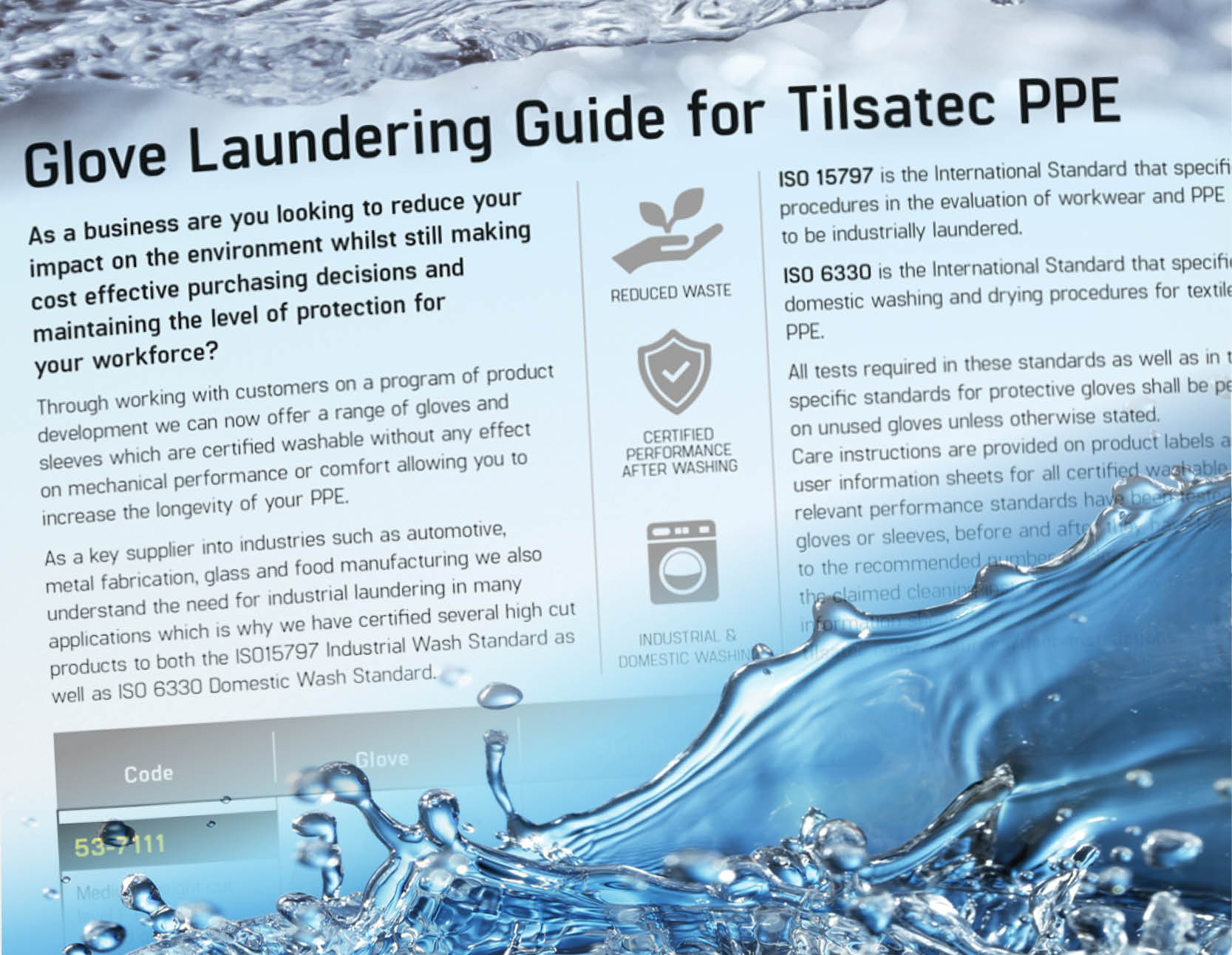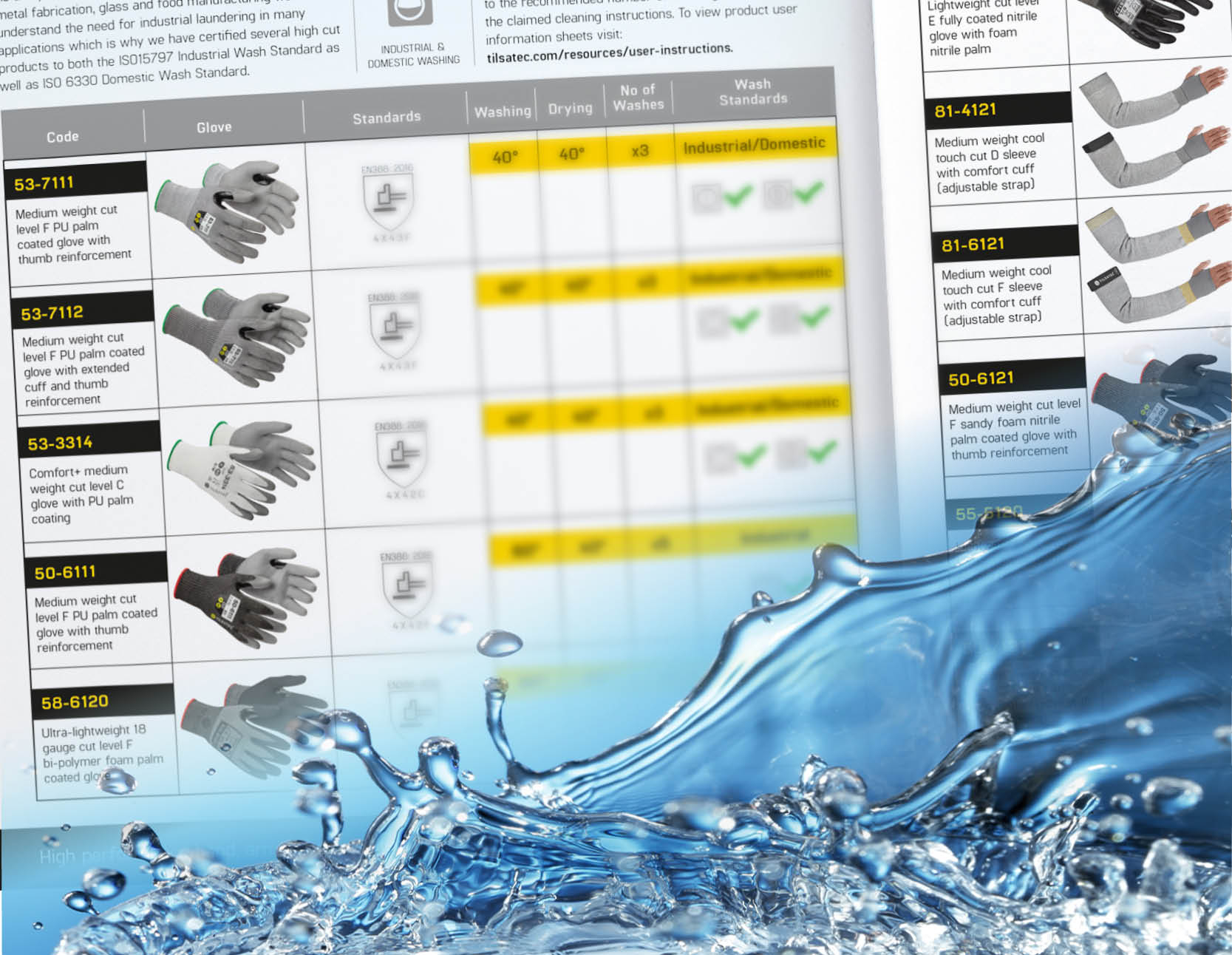Protective gloves can typically be washed in domestic conditions or be sent for industrial laundering. The type of wash procedure used will depend greatly on the gloves themselves if they are suitable for industrial laundering and the degree of dirt and substances, they have been in contact with such as oil and grease. In the case of gloves used in food environments, animal fats and blood may be present which require another specific set of washing instructions.
What are the testing standards?
We understand the need for industrial laundering across applications as an important supplier to the automotive, metal fabrication, glass, and food industries. For this reason, we have certified several high-cut products to both the ISO 6330 Domestic Wash Standard and the ISO 15797 Industrial Wash Standard.
ISO 15797 is the International Standard that specifies Industrial washing and finishing procedures for testing of workwear.
ISO 6330 is the International Standard that specifies Domestic washing and drying procedures for textile testing.
Unless otherwise specified, all tests required by these standards and the protective glove-specific standards must be carried out on unused gloves.
All certified washable personal protective equipment (PPE) comes with care instructions on the label and in the user information sheet. The gloves or sleeves have undergone testing to guarantee compliance with the applicable performance criteria both before and after they have been cleaned in accordance with the stated cleaning instructions for the prescribed number of cycles. Please go to tilsatec.com/resources/user-instructions to read product user information sheets.

Washing cut resistant gloves for use in food environments
The Tilsatec Food Safe Glove Range is:
- Designed with a new yarn structure that delivers improved grip and mechanical performance
- Made with a permanent antimicrobial agent built in
- Free from glass fibre to prevent product contamination
- Laundered to the EN ISO 15797 industrial wash test for 50 washes at 85°c and drying up to 70°c with no effect on cut resistance and other mechanical performance
- Colour coded to prevent cross-contamination
- Designed with an extended cuff for added protection
Click here to view the food-safe range of cut resistant gloves and sleeves.
What standards need to be met to ensure that the glove can perform?
According to EN ISO 21420, all tests required by this standard for protective gloves must be carried out on unused gloves unless otherwise noted. For a product complying with EN388 to be certified as launderable, it must be tested after the specified number of washes to the relevant EN388 standard tests;
- Abrasion Resistance
- Cut Resistance
- Tear
- Puncture
Once the product has been tested for the relevant tests after laundering, the levels of performance are determined by the lowest results obtained before and after cleaning.
What are the benefits of laundering personal protective equipment?
Wearing gloves in tough environments can lead to bacteria building up inside and outside the glove. Handling goods can contaminate the gloves with different substances, viruses and bacteria.
Here are some of the benefits of laundering:
- Life of the glove can often be extended 3 or 4 times depending on the level of usage and degree of dirt build up
- Washing and reusing gloves means less materials going to waste, reducing your burden and the impact on the environment
- Laundering gloves can often reduce spend as the cost of the glove over its useful life is less than buying new and replacing every time
We’ve created a matrix of the Tilsatec specialist cut resistance gloves that are tested to the washing standards and advises on the gloves’ launderability test methods and requirements, click here to view.

If there are ever any concerns regarding the launderability of the Tilsatec range, please check the User Information Sheet which will detail the full certifications of the product and recommended washing instructions.





